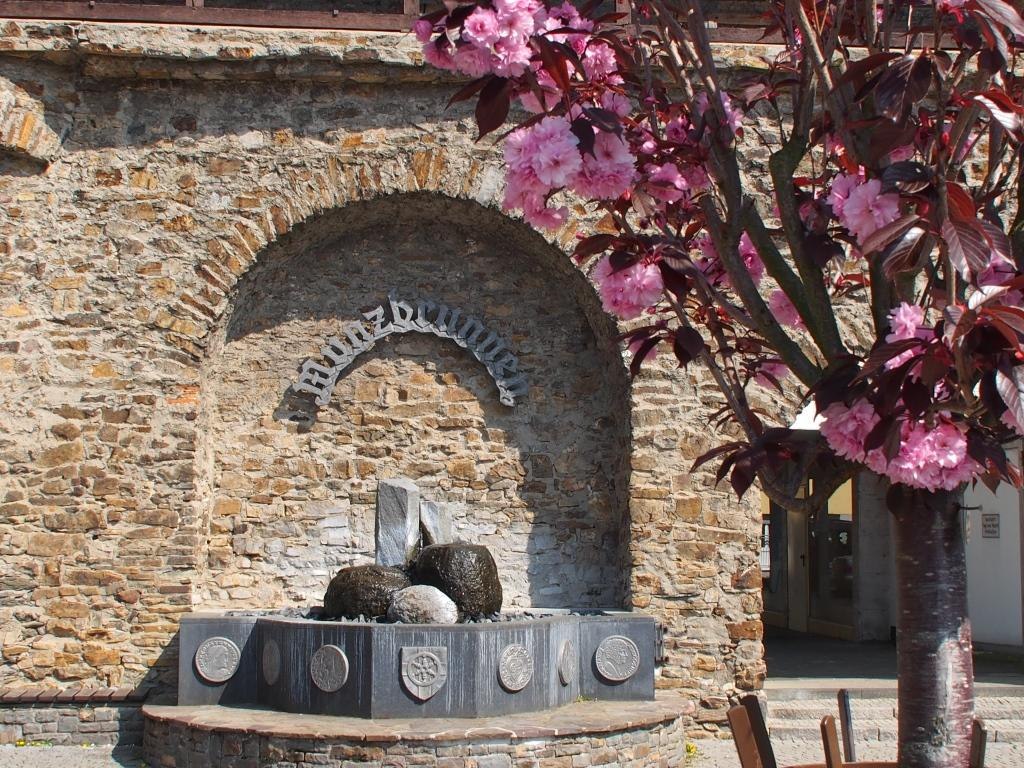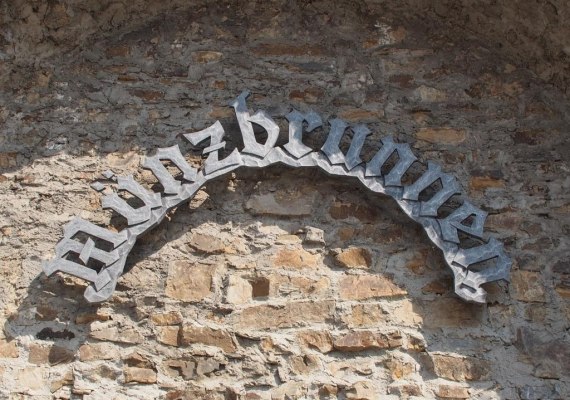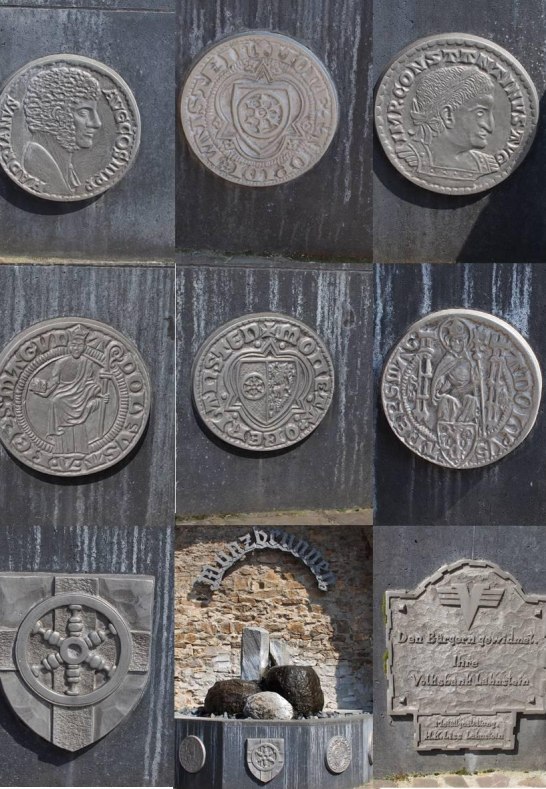00:00 - 23:59
Münzbrunnen am Salhofplatz
Kirchstraße 1, 56112 Lahnstein
The coin fountain invites you to linger at Salhofplatz.
In the heart of the city, on Salhofplatz, between the historic Hexenturm and the town hall, right below the battlements of the city wall, lies the Lahnstein coin fountain.
It was completed in 1981 and handed over to the city of Lahnstein in 1982 (donated by the Volksbank Lahnstein). Its basalt basin is set into a niche of the city wall. The reliefs made of aluminum art casting and the water spout were created by Lahnstein's Hans K. Liss. On the front side of the fountain is the coat of arms of the city of Lahnstein, valid since 1970.
On the left front are depicted the front and back of the Lahnstein gold ducat, and on the right front are the front and back of the Lahnstein white pfennig, also known as Albus. Both coin rarities were discovered near Mainz in 1882 and already attracted the interest of the local press at that time. They were minted in Martinsschloss in Lahnstein under the Archbishop of Mainz Adolf von Nassau (14th century). On the left and right are two Roman coins (circa 240 AD) that originate from a coin treasure found in Lahnstein in 1972.
At that time, more than 150 well-preserved Roman silver coins were found during excavation work in Weierchen. The coins depict emperors Hadrian and Constantine. (Originals approx. 20-25 mm in diameter, enlarged replicas at the fountain 330 mm in diameter.)
In 1999, the coin fountain was given a new look. After being "dry" for years, it was decided to renovate it. A metal plate was fitted into the fountain, onto which three basalt balls and two basalt columns were mounted. A grid was placed inside the fountain basin and filled with river pebbles. The former surrounding flower trough was redesigned to serve as a seating area.




